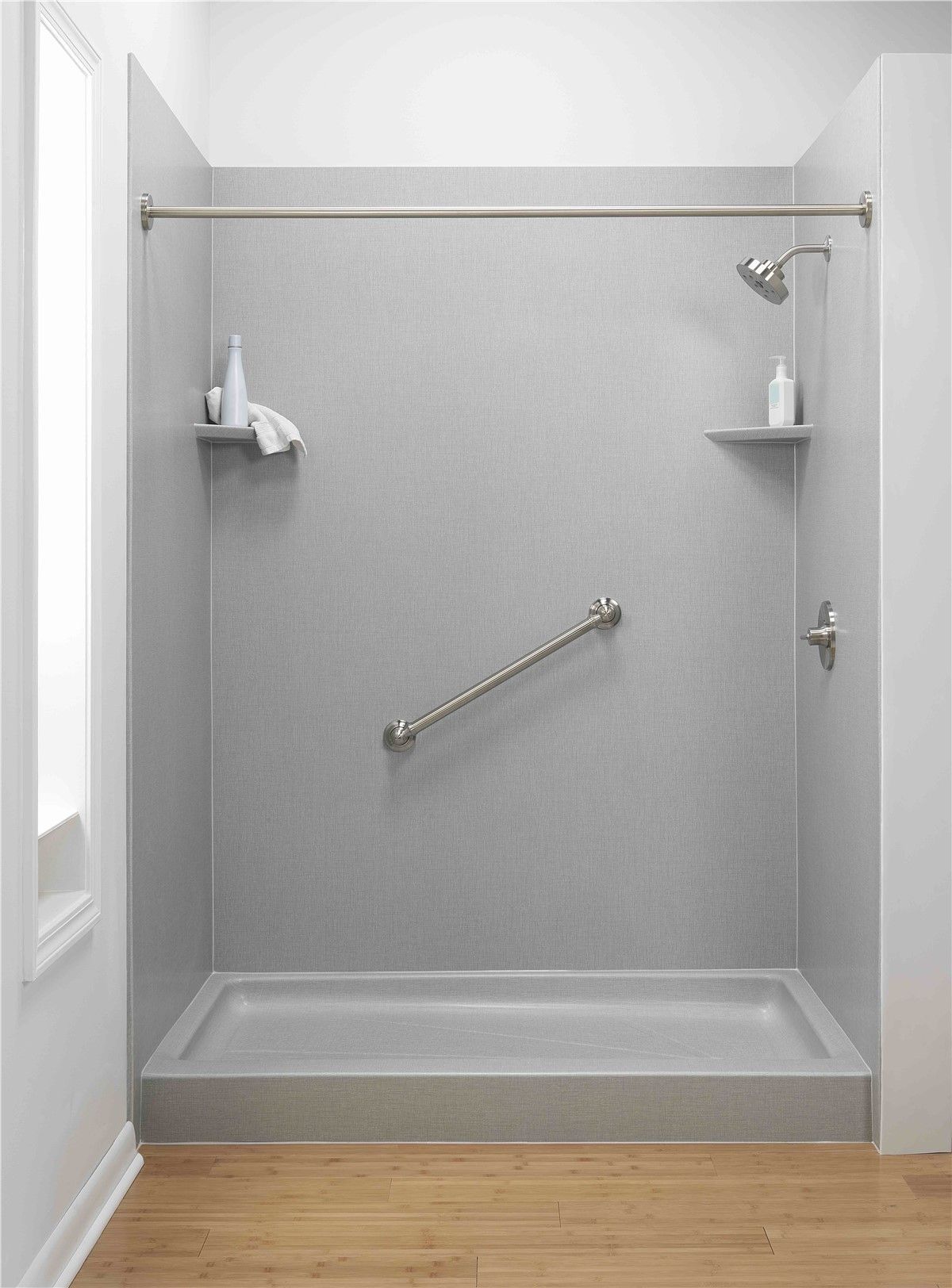Top Walk-In Shower Ideas to Elevate Your Bathroom Design
Innovative Walk-In Shower Ideas for Maximizing Small Bathrooms
Transforming a small bathroom into a functional and stylish space can be a challenge, but with the right walk-in shower ideas, it's entirely possible. Walk-in showers are excellent for small bathrooms as they do not require the space needed for a full tub and can be designed to fit snug corners or narrow spaces. Here are some innovative ideas to make the most of your compact bathroom with a walk-in shower.
1. Go Doorless to Save Space
In small bathrooms, every square inch counts. A doorless walk-in shower removes the need for the swing space required by a traditional shower door, creating a seamless look that enlarges the space visually. Fixed glass panels can act as a splash guard without closing off the shower, keeping the area open and airy.
2. Continuous Floor Design
Using the same flooring from the rest of the bathroom into the shower area not only enhances the aesthetic flow but also makes the bathroom appear larger than it is. This design trick removes visual barriers that typically segment the space, creating a unified look. Opt for slip-resistant tiles for safety without sacrificing style.
3. Utilize Vertical Space for Storage
In small bathrooms, maximizing vertical space is key. Consider built-in niches or floating shelves within the shower area for storing essentials like shampoo, soap, and other toiletries. These storage solutions keep items handy while maintaining a clutter-free shower floor.
4. Smart Placement of Shower Fixtures
Positioning shower fixtures cleverly can make a significant difference in a small walk-in shower. Wall-mounted controls and a handheld showerhead can be placed within easy reach, and arranging them on the same wall can reduce plumbing complexity and costs. This layout ensures functionality without compromising on space.
5. Incorporate Light and Reflection
A well-lit shower can visually expand a small bathroom. Consider adding recessed LED lights in the ceiling of the shower and a mirror on a wall opposite the shower entrance. Mirrors reflect light and create an illusion of depth, making the bathroom feel more spacious.
These walk-in shower ideas not only optimize space in small bathrooms but also enhance the overall functionality and style of the area. By implementing these strategies, you can enjoy the benefits of a modern, accessible shower even in the most compact spaces.
Creating a Spa-Like Atmosphere with Luxurious Walk-In Shower Designs
Elevating your bathroom to a luxurious retreat is all about incorporating elements that offer comfort and tranquility. A walk-in shower can serve as the centerpiece of a spa-inspired bathroom, providing a place to unwind and rejuvenate. Here’s how you can transform your bathroom into a spa-like sanctuary with these walk-in shower ideas.
1. Choose Soothing Color Schemes
To create a calming environment, select a color palette that evokes relaxation. Soft neutrals like greys, beiges, and pastels are ideal because they bring a sense of peace and serenity. These colors can be incorporated through wall tiles, flooring, and shower décor.
2. Install Multiple Showerheads
For the ultimate spa experience, outfit your walk-in shower with multiple showerheads. Options can include a rain showerhead that simulates the gentle fall of rain, a handheld sprayer for targeted cleaning, and body sprays that provide a full-body water massage. This combination allows for a luxurious and therapeutic shower experience every day.
3. Incorporate Natural Elements
Bringing elements of nature into your bathroom can enhance the spa-like feel. Materials such as stone, pebble floor tiles, and wood accents can be used within the shower area. Not only do these materials add a touch of nature, but they also introduce different textures that contribute to a more organic and relaxing atmosphere.
4. Add Aromatic and Therapeutic Features
Enhance the sensory experience by incorporating elements that appeal to the senses. Aromatherapy diffusers, scented candles, or even a small herb garden in the bathroom can infuse the space with relaxing fragrances. Additionally, consider chromotherapy – the use of colored lights in the shower – to further influence mood and create a therapeutic environment.
5. Design for Comfort
Incorporate features like a built-in bench or a heated floor to add comfort to your walk-in shower. A bench offers a place to sit and relax under the warm water, and it can also be used for practical purposes, such as aiding in mobility or providing a space for spa treatments like body scrubs or masks.
By transforming your walk-in shower into a spa-like oasis, you not only enhance your daily routine but also add a luxurious feature that increases the appeal and value of your home.
Enhancing Accessibility with Barrier-Free Walk-In Shower Designs
When designing a bathroom, it's crucial to consider accessibility to ensure it's comfortable and safe for users of all mobility levels. Walk-in showers, especially those without barriers, can significantly enhance the functionality of your bathroom while maintaining a sleek, modern look. Here’s how to incorporate barrier-free walk-in showers into your design for greater accessibility and ease of use.
1. Curbless Entry
A curbless walk-in shower is essential for barrier-free access. Removing any steps or curbs allows for easy entry and exit, making it suitable for the elderly, those with mobility issues, or anyone who may require wheelchair access. Ensure the shower floor is properly sloped towards the drain to prevent water from spilling into other areas of the bathroom.
2. Slip-Resistant Flooring
Safety is paramount in a barrier-free bathroom. Choose slip-resistant tiles for the shower floor to reduce the risk of falls. Textured tiles or smaller tiles with more grout lines can provide extra grip underfoot, offering a safer showering experience for everyone.
3. Wide and Open Space
Design the shower area to be spacious enough to accommodate mobility aids, such as wheelchairs or walkers. A larger shower space allows for easier maneuverability and the ability to add features like shower seats or support handles without making the area feel cramped.
4. Supportive Features
Install grab bars and handrails strategically within the shower area to provide support and stability for users. These should be placed where they can be easily reached from both standing and seated positions. Consider also a height-adjustable shower head or one that can be easily used from a seated position to enhance flexibility and usability.
5. Seating Solutions
Incorporating a built-in bench or a fold-down seat in the shower can greatly increase its accessibility. Seating provides stability and comfort for those who may not be able to stand for long periods. Ensure the seating is sturdy and securely installed, with easy access to controls and showerheads.
6. Easy-to-Use Controls
Opt for shower controls that are easy to reach and operate. Thermostatic controls that maintain water temperature can prevent scalding, while lever handles or push controls can be used more easily by people with limited hand strength or dexterity.
By considering these elements, you can create a walk-in shower that is not only accessible but also stylish and functional, catering to the needs of all family members and future visitors. This thoughtful approach to bathroom design not only enhances comfort but also ensures safety and independence for users with diverse needs.
Utilizing Glass Enclosures and Strategic Lighting to Enhance Walk-In Shower Designs
In any bathroom renovation, the goal is often to create a space that feels both open and inviting. Walk-in showers, particularly those with glass enclosures and well-planned lighting, can significantly contribute to this feeling of spaciousness and luxury. Here's how to effectively use glass and lighting to make your walk-in shower a standout feature of your bathroom.
1. Glass Enclosures for a Spacious Feel
Glass enclosures are a hallmark of modern walk-in showers, serving not just a functional purpose but also enhancing the overall aesthetics of your bathroom. They allow visual continuity, making the bathroom appear larger and more open. Consider frameless glass enclosures for a sleek, uninterrupted look that adds a touch of elegance and minimalism.
2. Smart Use of Frosting and Tinting
While clear glass is excellent for creating a sense of space, frosted or tinted glass options can provide privacy without sacrificing the flow of light. These options are particularly useful in bathrooms that require a balance between openness and personal privacy. Strategic placement of frosting can keep critical areas obscured while still showing off the shower's design features.
3. Optimal Lighting Arrangements
Good lighting is crucial in a bathroom, especially in the shower area. Consider incorporating multiple light sources to eliminate shadows and evenly distribute light. Recessed ceiling lights are ideal for general illumination, while waterproof LED strips around the shower enclosure can create a soft, ambient glow that enhances the shower experience.
4. Task Lighting for Functionality
In addition to ambient lighting, task lighting is important for practical purposes. Adjustable spotlights can be directed towards areas like the shaving or storage niches, providing focused illumination where it's needed most. This type of lighting is not only functional but can also highlight decorative tiles or fixtures, adding to the shower's visual appeal.
5. Use of Natural Light
Whenever possible, incorporate natural light into your bathroom and shower design. A skylight or a frosted window in the shower area can flood the space with daylight, making it feel more natural and open. If privacy allows, a clear window can offer a view to the outdoors, adding to the serene atmosphere.
6. Color and Light Synergy
Choose light colors for tiles and surfaces to reflect more light within the space, making the shower feel larger and more welcoming. Lighter colors can complement the transparency of the glass and the brightness of the lighting, creating a cohesive and uplifting shower environment.
By integrating these glass and lighting strategies into your walk-in shower design, you can create a bathroom that feels both luxurious and functional, making every shower a refreshing experience.
Adding Character with Creative Tile Work in Walk-In Shower Designs
The choice of tiles in a walk-in shower can dramatically affect the overall ambiance and style of your bathroom. Tiles not only protect the walls and floor from moisture but also serve as a key design element. Whether you're going for a bold, artistic statement or a subtle, elegant backdrop, here are some creative tiling ideas to enhance your walk-in shower and give it a distinctive look.
1. Contrasting Tile Patterns
To add visual interest and depth to your walk-in shower, consider using contrasting tile patterns. For example, combining large-format tiles on the walls with smaller, mosaic tiles on the shower floor can create a dynamic look. This not only highlights different areas of the shower but also adds texture and color contrast.
2. Feature Walls
Design a feature wall in your walk-in shower to draw the eye and add a focal point to the space. This could be a wall with a bold pattern, vibrant color, or a different texture from the rest of the shower. Feature walls are particularly effective behind clear glass enclosures where they can be fully appreciated from inside and outside the shower.
3. Geometric Shapes and Lines
Utilize tiles cut into geometric shapes or arrange them in unique patterns like herringbone, chevron, or basket weave. These designs can make the shower space appear larger and more modern, and when paired with neutral colors, they add sophistication without overwhelming the senses.
4. Subtle Accents with Borders and Decos
Add subtle elegance by incorporating decorative borders or accent tiles that complement the main tile color. This can be done near the floor, ceiling, or midway along the wall to create a distinct separation or highlight certain architectural features of the bathroom.
5. Mix and Match Materials
Don’t be afraid to mix materials within your walk-in shower. Combining ceramic with glass, stone, or metal tiles can produce a rich, textured look that feels luxurious and custom-designed. This approach works well in larger showers where different materials can define different functional areas, such as a seating area or storage niche.
6. Artistic Tile Layouts
Consider custom or artisan tiles that can serve as art pieces themselves. Hand-painted tiles or tiles with organic, flowing patterns can turn your shower into a canvas, expressing personal style and adding a unique artistic touch to the bathroom.
7. Reflective and Glossy Finishes
For smaller walk-in showers, using glossy or mirrored tiles can help reflect light and make the space appear larger and brighter. These finishes add a touch of glamour and can modernize a space with minimal effort.
By incorporating these creative tile work ideas into your walk-in shower, you not only enhance its functionality and durability but also transform it into a stunning design element of your home. Creative tiling offers endless possibilities to personalize your space and ensure your bathroom stands out as a masterpiece of your interior design.
Blog






